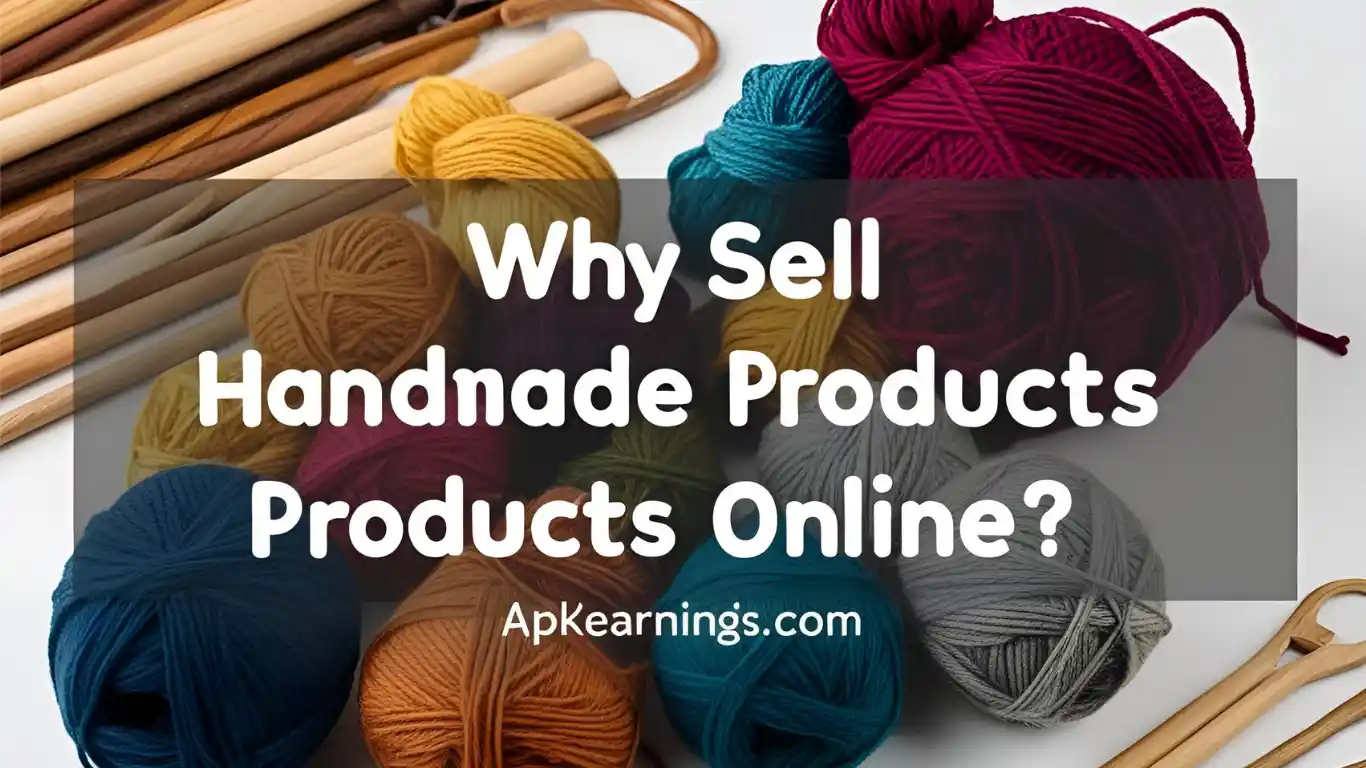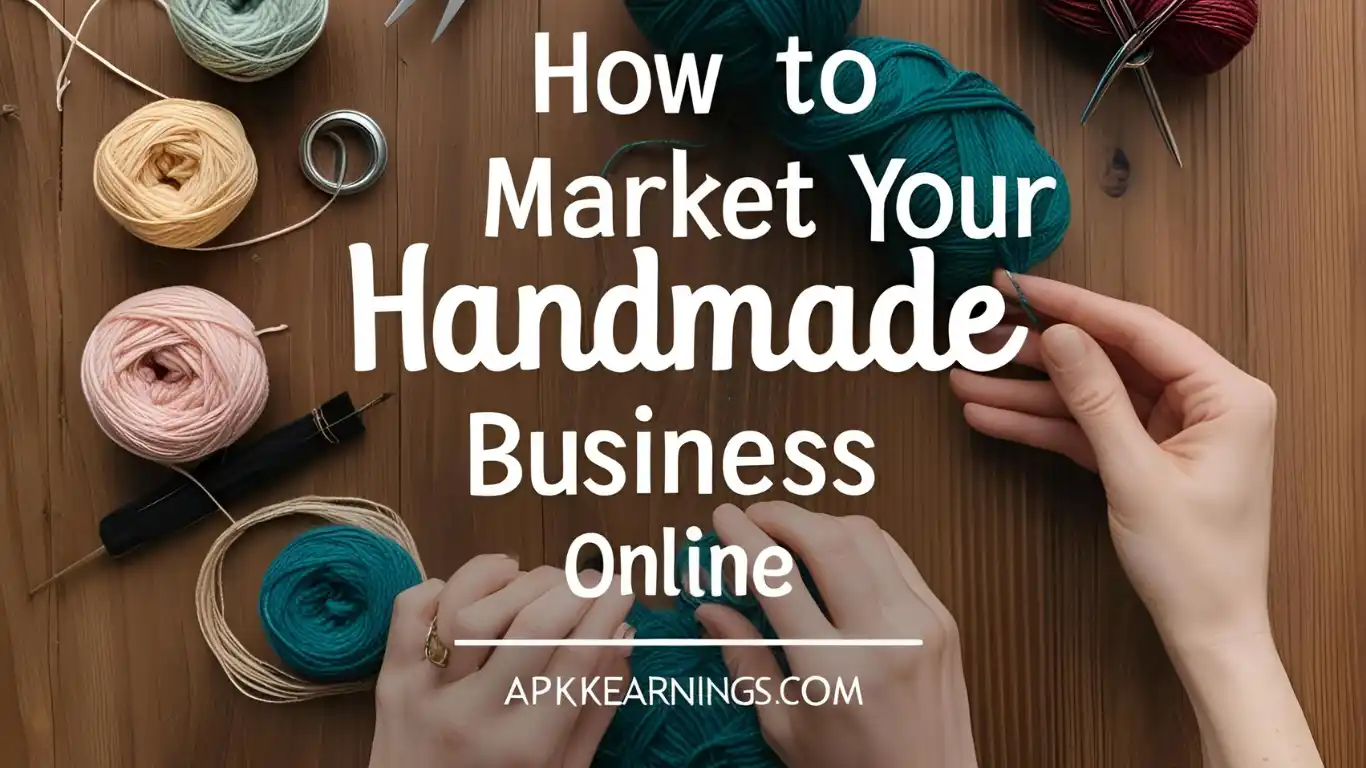The rise of e-commerce has made it easier than ever for creative entrepreneurs to turn their passion into a profitable handmade business. Whether you create jewelry, pottery, clothing, or other handcrafted items, finding the right online marketplace is crucial for success. Making your decision about which online platform to sell your handmade products proves difficult due to the wide array of choices available.
In this guide, we’ll explore the best platforms to sell online, helping you choose the right one based on fees, audience, and features. Whether you’re looking for a well-established marketplace like Etsy or prefer the independence of running your own craft store, there’s a platform for everyone.
1. Why Sell Handmade Products Online?

Those who enjoy crafting and wish to create a business opportunity should consider online selling as the optimal method to access numerous consumers. Here’s why:
Convenience and Flexibility
The online marketplace enables homemade product sellers to establish their own work-at-home schedule and maintain flexible working conditions. Unlike physical stores, which require rent and maintenance, an online marketplace makes it easy to manage your business with minimal overhead costs.
Global Reach and Accessibility
With an online store, your handmade business isn’t limited to local customers. Your product reach expands globally through an online shop which enables you to gain numerous worldwide customers. Platforms like Etsy and Amazon Handmade already have millions of users looking for unique handcrafted items.
Cost-Effective Compared to Physical Stores
Setting up an online craft store is much cheaper than opening a physical shop. Your savings accumulate from rent expenses together with utility bills and store employees’ wages but you still gain access to an extensive buying audience. Online marketplaces allow startups to list their business items at no or minimal costs to support new small company growth.
2. Factors to Consider Before Choosing an Online Marketplace
Several essential elements need evaluation before you decide the best marketplace for your handmade products.
Fees and Commissions
Online marketplaces differ in the specific charges they collect as they bill customers for item listings followed by transaction commissions and transaction payment costs. Platform owners impose two types of payment structures either by assessing a standard fee or deducting a percentage from each transaction. For example:
Etsy charges $0.20 per listing and takes a 6.5% transaction fee.
The fees on Amazon Handmade include a 15% commission on each purchase but experiences no costs for listing products.
Customer Base and Competition
Each online marketplace has a different audience. Etsy caters to handmade and vintage lovers, while Amazon Handmade attracts a broader customer base. Survey the stores where your excellent target buyers purchase goods before settling on an online platform.
Shipping Policies and Logistics
Every marketplace has different standards regarding their shipping services. Amazon Handmade provides shipping support but the other marketplaces require sellers to manage their own delivery services. Check shipping expenses as well as shipping duration so you can prevent dissatisfied consumers.
3. Best Platforms to Sell Handmade Products Online
There are many online marketplaces where you can sell handmade items, but some stand out as the best options for sellers. Let’s explore the top choices:
3.1 Etsy – The Most Popular Handmade Marketplace
Etsy is the go-to platform for selling handmade goods. With over 90 million active buyers, it’s an excellent place to start your handmade business.
Pros:
Large customer base
User-friendly interface
Strong community support
Cons:
High competition
Listing and transaction fees
Best Practices:
Set up your listings using SEO combined with high-quality images that attract more customers.
Offer competitive pricing and discounts.
Your business should deliver outstanding customer service as a means to interact with customers effectively.
3.2 Amazon Handmade – For Global Exposure
The Amazon Handmade platform allows master craftsmen worldwide to reach potential customers across all markets. Being part of Amazon Handmade requires successful program application since regular sellers cannot participate.
Pros:
✔️ Huge customer base
✔️ No listing fees
✔️ Trusted platform
Cons:
❌ High commission fees (15%)
❌ Strict approval process
Best Practices:
Provide detailed product descriptions.
Offer fast and reliable shipping.
Price your products competitively.
3.3 Shopify – Your Own Craft Store
If you want complete control over your handmade business, Shopify is an excellent option. Unlike Etsy or Amazon Handmade, Shopify allows you to create a fully customized online store without competition from other sellers.
Pros:
✔️ Full control over branding and design
Users need to pay just a monthly subscription fee instead of paying any listing costs.
✔️ Integrates with social media and other marketplaces
Cons:
Successfully attracting customers through marketing becomes necessary with this option
❌ Monthly fees can add up
Best Practices:
Your shop will become more visible when you perform SEO improvements.
Your business will gain more traffic by linking your Shopify store with Facebook Marketplace and Instagram Shops.
To keep customers loyal you should introduce promotional deals together with loyalty benefits.
3.4 eBay – A Well-Known Online Marketplace
While eBay is not exclusive to handmade products, it remains a viable option for artisans looking to sell online. The marketplace draws millions of daily buyers who can provide extensive market visibility.
Pros:
✔️ Large customer base
✔️ Low listing fees (50 free listings per month)
✔️ Auction-style selling available
Cons:
❌ High competition from mass-produced items
The platform charges more money to customers with promoted listings.
Best Practices:
High-quality imagery combined with descriptive text containing relevant keywords should be implemented.
Your product pricing should match the market value or you can choose auctions.
The combination of prompt delivery and top-level customer service should be offered to customers.
3.5 Facebook Marketplace and Instagram Shops – Social Selling
You can utilize Facebook Marketplace together with Instagram Shops due to their capabilities for direct customer contact. Through these platforms users can access multiple potential customers without needing to pay costly commissions.
Pros:
✔️ Free to list products
✔️ Direct communication with buyers
✔️ Integrated payment options
Cons:
❌ Requires active marketing efforts
Social marketplaces generate less trust from customers than traditional venues do.
Best Practices:
Hash tags will help you reach customers more effectively while investing in interpersonal communication with your following base.
Publish your products with top-notch image and video content.
Facebook Ads enable your products to reach wider audiences in order to increase their visibility.
3.6 Woo Commerce – The Best for WordPress Users
For those who prefer WordPress, Woo Commerce is a great way to set up a craft store. As a free plugin users can customize their entire online shop through its features.
Pros:
Online sellers will not encounter any costs associated with listings or commissions.
✔️ Full control over branding and design
✔️ Integrates with various payment gateways
Cons:
❌ Requires some technical knowledge
❌ Hosting costs apply
Best Practices:
Select a speed-enhanced transit service that delivers reliable server functions.
Your shop must use SEO plugins in order to optimize itself for search engine results.
Bundle deals along with discounts should be offered to expand customer base.
3.7 Folksy – A UK-Based Marketplace for Handmade Sellers
Handmade sellers in the UK will find an excellent platform with Folksy. It’s a smaller version of Etsy, but exclusively for UK-based artisans.
Pros:
✔️ Focused on handmade products
✔️ Low competition compared to Etsy
✔️ UK-based support
Cons:
❌ Limited to UK sellers
❌ Smaller customer base
Best Practices:
Offer UK-exclusive products.
Your products need detailed descriptions which must be written with complete clarity.
High-quality images should be used to optimize your shop structure.
3.8 Zibbet Provides Sellers with an Easy Solution for Reaching Diverse Markets Through Multiple Sales Channels
Zibbet is unique because it allows you to list your handmade products across multiple online marketplaces (including Etsy, Shopify, and Facebook Marketplace) from one dashboard.
Pros:
✔️ Multi-channel integration
✔️ No listing fees
✔️ Great for scaling a handmade business
Cons:
❌ Monthly subscription fee
❌ Limited exposure compared to Etsy or Amazon
Best Practices:
Sync products across multiple platforms.
Evaluation of analytics data helps identify which marketplace platform brings the best results.
The inventory needs to remain current on every marketplace where you sell products.
3.9 Big Cartel – Best for Independent Artists
Small business artists should choose Big Cartel when seeking a minimalist online selling platform. It’s perfect for small handmade businesses that want a simple and affordable online marketplace.
Pros:
✔️ No commission fees
✔️ Simple and easy-to-use interface
✔️ Free plan available
Cons:
❌ Limited customization options
Small businesses with up to 500 products will find the most suitable solution in this platform.
Best Practices:
Keep branding consistent.
Artists should incorporate storytelling methods to establish better relationships with their customers.
Release special edition products which generate a sense of time-sensitive demand among customers.
3.10 Madeit – An Australian Handmade Marketplace
For Australian sellers, Madeit is a great alternative to Etsy. This online marketplace is specifically for Australian handmade artists and crafters.
Pros:
✔️ Focused on handmade items
✔️ No overseas competition
✔️ Supportive seller community
Cons:
❌ Limited to Australian sellers
❌ Smaller audience compared to Etsy
Best Practices:
You should advertise your products through social media channels.
Offer unique, Australia-themed handmade items.
The target market of local shoppers enables one to build relations leading to multiple sales.
4. How to Market Your Handmade Business Online

Using SEO for Your Craft Store
Use relevant keywords like “handmade business”, “sell online”, and “craft store” in product descriptions.
Optimize product titles and images.
Create written blog material about your product production process.
Social Media Marketing Tips
Post behind-the-scenes views through both Instagram and TikTok posts.
Your handcrafted business can benefit from using both hashtags as #handmadebusiness and #craftstore.
Partner with influencers as part of your approach to reach additional prospective customers.
Running Ads and Promotions
Facebook Ads serve to target particular market segments.
Offer discounts for first-time buyers.
Temporary product promotions should be utilized to stimulate spontaneous buying behavior.
5. Common Challenges and How to Overcome Them
Competition and Standing Out
Your business will benefit from selecting a particular field that separates your brand from the competition.
High-quality branding as well as excellent packaging deserve investment from you.
Handling Shipping and Customer Service
Offer reliable shipping options.
Your business gains speed in customer service due to automated messaging systems.
Scaling Your Handmade Business
Expand to multiple online marketplaces.
Invest in paid advertising.
Make a move to introduce periodic or personalized product collections.
Conclusion
Selling handmade products online has never been easier, thanks to platforms like Etsy, Shopify, and Amazon Handmade. Whether you’re looking for a craft store that offers full control or an online marketplace with an existing audience, there’s an option that suits every seller’s needs.
Focus your success plan on SEO practices together with social media marketing and keeping outstanding customer service standards. Choose the best online marketplace based on your goals, and start growing your handmade business today!
FAQs
1. Which online marketplace is best for beginners in handmade selling?
Etsy is the best platform for beginners due to its ease of use and large customer base.
2. How can I increase sales on Etsy?
Enhance your listings with SEO while putting high-quality pictures first and market your shop across different social media accounts.
3. Freedom to sell handmade products through online platforms exists with no overt costs but limited options are available for free.
Yes! The no-fee selling option includes Facebook Marketplace as well as Instagram Shops and Big Cartel’s basic plan.
4. Selling handmade products online comes with several major hurdles which sellers must overcome.
The three leading obstacles in online selling are high market competition alongside shipping logistics along with providing quality customer service.
5. Is it possible to list shop items across various selling platforms during the same time period?
Yes! Zibbet provides multi-channel selling capabilities which enable you to connect with additional potential customers.

